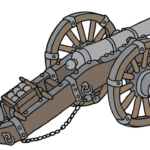لقراءة النسخة العربية أنقر هنا.
A force may have a turning effect (or twisting effect). This turning effect depends on the magnitude F of the force and the distance d from the center where the force is applied perpendicularly.
This turning effect is called the moment “M” of the force or the torque, and it is calculated this way:
At equilibrium, the moment (torque) from one side of the center (the pivot) in a certain direction of rotation, must be equal to the moment (torque) from the other side of the center in the opposite direction of rotation (or in other words, the clockwise moment must be equal to the counter-clockwise moment). That is force times distance from one side must be equal to the force times distance from the other side.
If the force is not applied perpendicularly to the arm distance, then the moment of the force can be calculated this way:
Where θ is the angle that the force makes with the arm.




